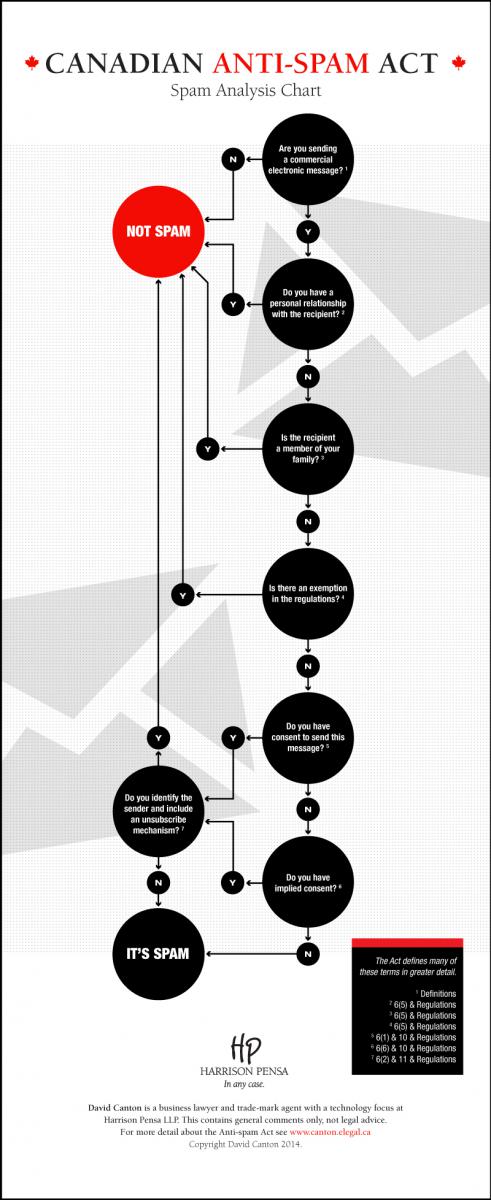December 23, 2013
The Regulations and most of the Canada Anti-Spam Legislation (CASL) will come into effect on July 1, 2014.
Here are relevant details in the Governor in Council Regulations under the Canada Anti-Spam Legislation from the perspective of the performing arts sector provided by CAPACOA:
- Registered charities are exempted for electronic commercial email messages where “the message has as its primary purpose raising funds for the charity” (regs. 3.g). Registered charities will however not be exempted if the main purpose of the message is the promotion of regular performing arts events that are not specifically fund-raising events.
- Non-profit organizations who have members are deemed to have a non-business relationship with their members and, as such, messages to their members are exempt from the Act (regs. 7.2).
- Personal communications and most regular business-to-business communications are specifically exempted from the Act (regs. 2 and 3.a). This was expected from the regulations, since CASL is mainly focused on commercial communications with the public.
The regulations did not respond to submissions made to Industry Canada asking that the nonprofit sector be exempt from the Act. As a result, performing arts organizations will have to undergo a review of their electronic messaging practices to ensure that they are in conformity with the Act. The main requirements under the Act are well synthesized in this summary by the Ontario Non-profit Network. Such requirements will require arts organizations to:
- Ensure that the sender of a commercial electronic message is clearly identified (i.e., the person that sends an email or the organization that sends a newsletter);
- Provide information enabling the person to whom the message is sent to readily contact the sender (i.e., provide a reply-to email and/or a phone number);
- Provide an easy unsubscribe mechanism (i.e., a one-click unsubscribe link on a newsletter);
- Ensure that they have explicit consent from the person to whom the message is sent (i.e., the person subscribed to your newsletter on your website) or that they’ve had a business relation with that person over the last two years (i.e., the person is a subscriber or single-ticket buyers)
Below is a handy chart regarding the Canadian Anti-Spam Act.


